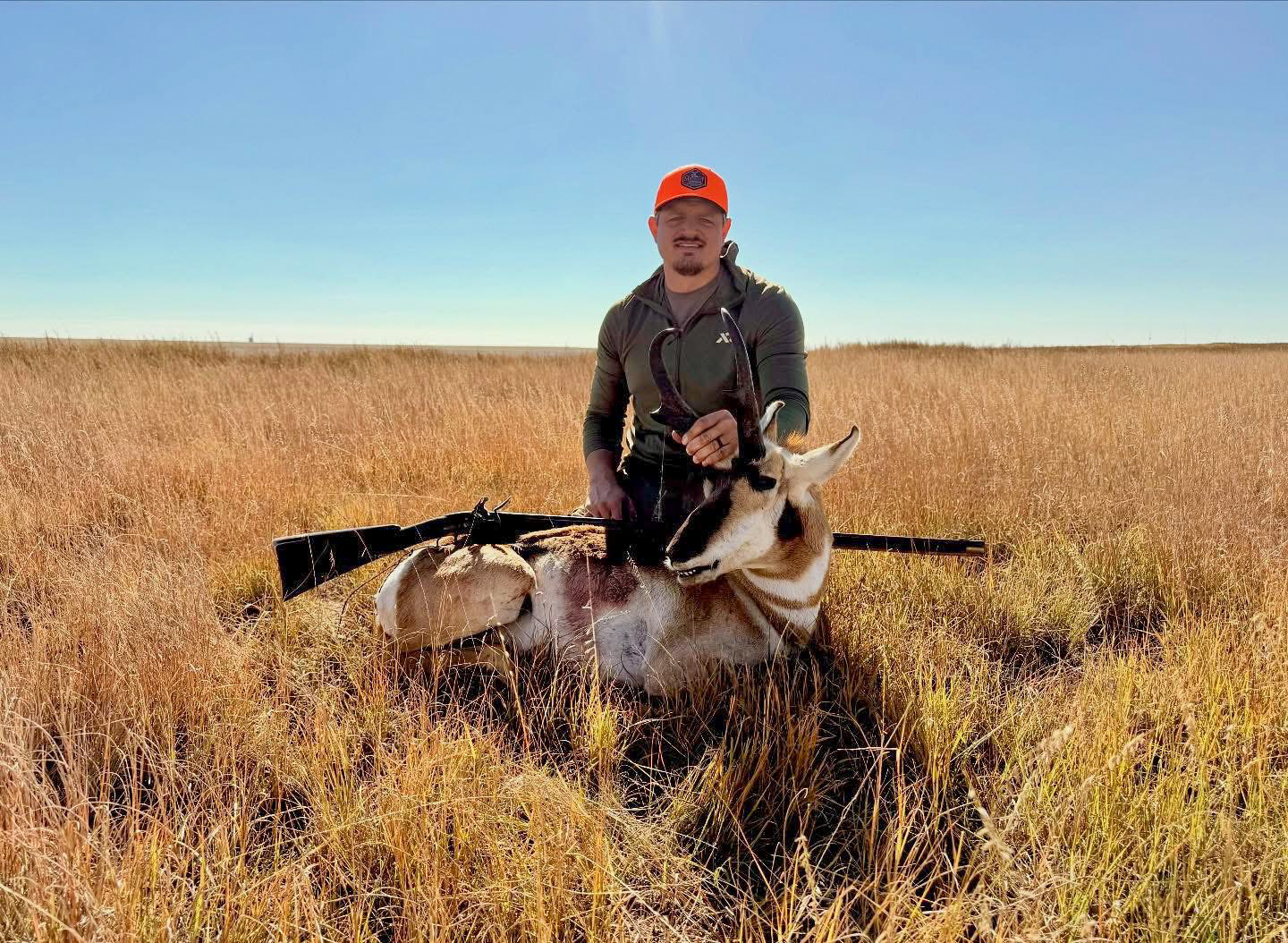Jacob Zutterman and his pal Phil Lierz had driven hundreds of miles from their homes in Eastern Kansas to the western side of the state for antelope season. Zutterman had drawn a coveted Kansas pronghorn tag (the state issued just 156 in 2025) and Lierz went along to learn and watch, hoping one day to draw a tag, too.
“I’d planned the hunt for five years and made hundreds of phone calls to learn where the best chance was to take an antelope with my flintlock rifle,” Zutterman tells Outdoor Life. “I finally got my tag this year for Unit 17, on the Colorado border.”
Lierz joined him for their four-day hunt, and they left their homes in Wamego, Kansas, several days ahead of the Sept. 29 opener.
“We set a tent near a county-owned lake and used it as a base camp,” said Zutterman, a 33-year-old construction company manager. “We went out for two days scouting for antelope before the season and saw over 100 animals. We found three good bucks, and on opening day we tried stalking them using a decoy.”
The decoy tactic failed miserably, says Zutterman. So he changed tactics and decided to stalk the next good pronghorn buck he located without one.
During one stalk he got 75 yards away from a good antelope and took an offhand shot with his .58 caliber flintlock rifle that he had built from a Kibler Long Rifle Kit in 2020.
“I hit the buck low and forward, grazing its brisket and he took off running,” Zutterman said. “I was sick that I’d hit him, and I was going to do everything possible to get that antelope.”
Zutterman stalked the buck he’d hit for five hours that day, covering four miles, much of it on his hands and knees through cactus and sandspur country. He grew exhausted and dehydrated, as he stayed low and slow pursuing the pronghorn to get within range of his flintlock.
After he nearly bumped into a rattlesnake, Zutterman decided to end his stalk and return the next day. He had crawled within a few yards of a coiled prairie rattler, its tongue flicking and tail buzzing at the prone hunter.
“We headed back to our truck, and camp,” said Zutterman. “We went back to the spot where we’d last seen the antelope at dawn. He’d moved a bit, and we had to glass and look for him. But when the sun peeked up, we spotted him bedding down about a mile away.
Lierz stayed at the truck and glassed the pronghorn while Zutterman stalked slowly and quietly to the animal. He got to 75 yards and could see the antelope’s horns, but not its body in the 2-foot-high prairie grass.
“I watched his horns for 30 minutes from just 75 yards away, and they didn’t move at all,” Zutterman explained. “I figured he was asleep. I slowly got on my knees, and used a pair of shooting sticks to steady my rifle.
“My gun is zeroed for 50 yards, so I aimed three inches high and fired.”
The flintlock coughed a lot of smoke, but Zutterman heard the 270-grain roundball smack the buck. The animal jumped and went around a hill, but didn’t go far. The flintlock’s round ball projectile passed completely through its lungs, and the buck ran only 30 yards before falling dead.
The antelope’s horns are 14 1/8-inches inches tall, and Zutterman says the animal rough scores 71.74 inches. It’s a good Kansas antelope, and Zutterman is delighted with his buck, particularly taking it with his primitive weapon flintlock rifle.
Read Next: Photos from Pennsylvania’s Flintlock Season, the Last of Its Kind in the Country
“I want to get all four big game Kansas species with my flintlock, and this pronghorn is my third. I’ve taken a good whitetail buck and an elk. All I need now is a mule deer buck and I’ll have a big game state slam with a flintlock.”
Read the full article here




